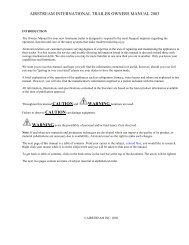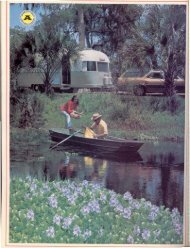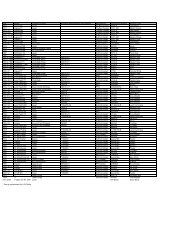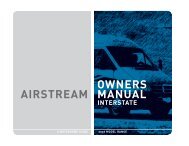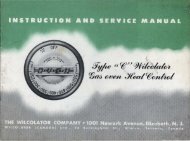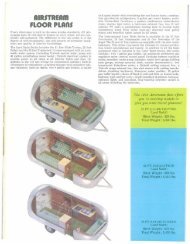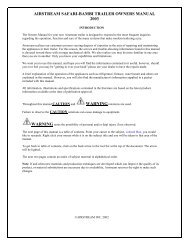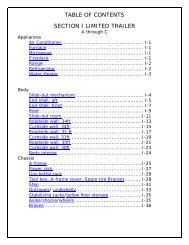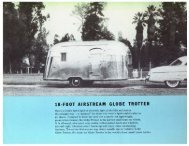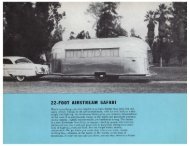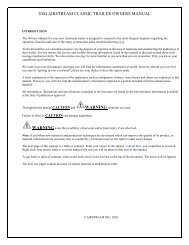Classic - Airstream
Classic - Airstream
Classic - Airstream
You also want an ePaper? Increase the reach of your titles
YUMPU automatically turns print PDFs into web optimized ePapers that Google loves.
Plumbing<br />
F<br />
rapidly.<br />
Water pressure at some campgrounds may be low on city water. The water<br />
pump can be turned on to assist the city water hookup pressure. Be sure there<br />
is some water in the fresh water tank. The pump will only use the water that is<br />
needed out of the tank to bring the pressure up to the usual standard.<br />
Reverse the valve to bypass water heater for winterizing.<br />
WATER PUMP AND STRAINER<br />
The water pump and strainer are located<br />
under the wardrobe on all models and<br />
is accessed by a hinged or removable<br />
bottom shelf or removable front panel.<br />
To clean strainer screen, unscrew the<br />
clear plastic strainer cap, counter<br />
Sureflo<br />
Strainer Cap<br />
Threaded<br />
Disconnect<br />
Screen<br />
clockwise, remove and clean the screen. After cleaning, place the screen<br />
back in the strainer cup and hand tighten the cap snuggly. NOTE: DO NOT<br />
OVERTIGHTEN. The gasket ring inside the cap performs sealing and too much<br />
pressure will only break the strainer cap or ruin<br />
the gasket.<br />
Start the pump and check for leaks. If a priming problem develops check all<br />
connection for air leaks. The complete strainer assembly can be removed by<br />
loosening the threaded disconnect nuts at the pump and strainer inlets.<br />
SANITIZING<br />
Potable water systems require periodic maintenance to deliver a consistent flow<br />
of fresh water. Depending on use and the environment the system is subject to,<br />
sanitizing is recommended prior to storing and before using the water system<br />
after a period of storage. Systems with new components, or ones that have<br />
been subjected to contamination, should also be disinfected as follows:<br />
1. Use one of the following methods to determine the amount of common<br />
household bleach needed to sanitize the tank.<br />
A) Multiply “gallons of tank capacity” by 0.13; the result is the<br />
ounces of bleach needed to sanitize the tank.<br />
B) Multiply “Liters of tank capacity” by 1.0; the result is the milliliters<br />
of bleach needed to sanitize the tank.<br />
2. Mix into solution the proper amount of bleach within a container of water.<br />
3. Pour the solution (water/bleach) into the tank and fill the tank with potable<br />
water.<br />
4. Open all faucets (Hot & Cold) allowing the water to run until the distinct<br />
odor of chlorine is detected.<br />
F - 6



